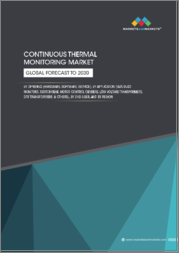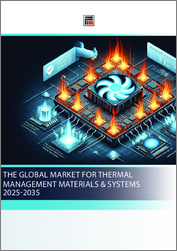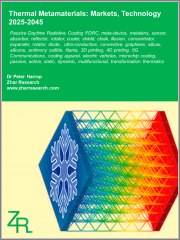
|
시장보고서
상품코드
1677401
세계의 마이크로채널 쿨러 시장 : 제품 유형, 컴포넌트, 기술, 최종사용자 산업, 판매채널별 - 예측(2025-2030년)Microchannel Cooler Market by Product Type, Component, Technology, End-User Industry, Sales Channel - Global Forecast 2025-2030 |
||||||
마이크로채널 쿨러 시장은 2024년에 147억 3,000만 달러로 평가되었습니다. 2025년에 161억 2,000만 달러에 이르고, 연평균 9.54% 성장하여 2030년에는 254억 5,000만 달러에 달할 것으로 예상됩니다.
| 주요 시장 통계 | |
|---|---|
| 기준 연도 : 2024년 | 147억 3,000만 달러 |
| 추정 연도 : 2025년 | 161억 2,000만 달러 |
| 예측 연도 : 2030년 | 254억 5,000만 달러 |
| CAGR(%) | 9.54% |
마이크로채널 쿨러 시장은 혁신적인 열 관리 솔루션과 현대 산업에서 효율성에 대한 요구가 높아지는 교차점에 위치하고 있습니다. 냉각 시장의 이 분야는 제품의 수명과 성능을 향상시키기 위해 신뢰할 수 있고 컴팩트하며 고성능의 냉각 시스템을 찾는 기업들이 주목하고 있습니다. 최근 몇 년동안 기술 발전, 규제 강화, 에너지 수요 증가로 인해 마이크로채널 쿨러의 채택이 가속화되고 있습니다.
마이크로채널 쿨러 시장의 핵심은 점점 작아지는 공간에서 우수한 열 전달 특성을 실현해야 한다는 것입니다. 제품 환경은 변화하고 있으며, 제조업체들은 첨단 소재와 최첨단 설계를 모색하고 있습니다. 효율성, 혁신, 지속가능성에 대한 열정을 바탕으로 이 분야의 전문가들은 고전력 전자제품에서 까다로운 산업용도에 이르기까지 다양한 환경의 복잡성을 해결하기 위한 접근 방식을 지속적으로 개선하고 있습니다.
이 개요는 변화하는 시장 변화, 복잡한 세분화 전략, 지역적 역학, 경쟁의 영향 등을 분석하여 심층적인 조사를 위한 토대를 마련합니다. 다음 섹션에서는 이 정교하고 빠르게 진화하는 시장을 탐색하는 이해관계자들에게 명확하고 실용적인 통찰력과 가이드를 제공하는 것을 목표로 합니다.
냉각 산업 환경을 재정의하는 변혁의 시기
마이크로채널 쿨러의 상황은 냉각 산업의 전략적 방향과 성과에 직접적인 영향을 미치는 변화의 시기를 맞이하고 있습니다. 역사적으로 전통적인 냉각 방식에 의존해 왔던 이 분야는 신소재의 통합과 공정 설계의 강화로 급격한 변화를 겪고 있습니다. 첨단 제조 기술과 디지털 통합의 발전은 적응형 냉각 솔루션의 길을 열어 제조업체들이 더 높은 열 전달 효율과 소형화된 제품을 제공할 수 있는 길을 열어주었습니다.
엄격한 에너지 효율 규제, 주변 온도 상승, 고밀도 전자제품의 성능 요구 사항 증가와 같은 시장 성장 촉진요인이 이러한 솔루션의 진화를 주도하고 있습니다. 경제적 압박과 지속 가능한 관행에 대한 관심도 R&D 이니셔티브를 전면적으로 가속화하고 있습니다. 기업들이 다양한 재료와 미세 가공 기술을 시험하는 가운데, 업계 의사결정권자들은 민첩성과 혁신에 대한 보상을 받을 수 있는 환경을 목격하고 있습니다.
이러한 급속한 방향 전환의 시기는 성능 중심의 사고방식에서 지속가능성, 확장성, 수명주기 비용을 보다 폭넓게 고려하는 사고방식으로의 전환으로 특징지어집니다. 따라서 이해관계자들은 기존 시스템을 재평가할 뿐만 아니라 향후 몇 년동안 냉각 효율과 신뢰성을 재정의하는 미래지향적 접근 방식에 적극적으로 투자하고 있습니다.
제품, 부품, 기술, 산업, 판매 채널에 대한 주요 세분화 통찰력
종합적인 세분화 분석을 통해 마이크로채널 쿨러의 성장과 채택을 촉진하는 수많은 통찰력을 발견했습니다. 시장은 먼저 제품 유형에 따라 세분화되며, 세라믹 쿨러, 금속 쿨러, 폴리머 쿨러의 역학을 면밀히 조사했습니다. 금속 냉각기 카테고리에서는 알루미늄과 구리 사이에 추가적인 차별화를 볼 수 있습니다. 또 다른 세분화 매개변수인 구성 요소 기반 분석은 시장을 응축기, 증발기, 물 코일과 같은 핵심 요소로 나누어 각 구성 요소가 전체 시스템의 효율성에 중요한 역할을 하는 것을 확인했습니다.
기술적 세분화에서는 단상 냉각과 2상 냉각을 구분합니다. 단상 냉각은 단순성과 신뢰성으로 유명하며, 2상 냉각은 에너지 효율을 높이고 가혹한 작동 조건에서 더 나은 성능을 약속합니다. 이 기술적 이분법은 다양한 산업 요구 사항과 운영 상황에 대응합니다. 또한, 최종 사용자 산업별 세분화는 항공우주 및 방위, 자동차, 가전, IT 및 통신 등 광범위한 범위를 포괄합니다. 후자의 경우, 디지털 전환으로 인해 데이터가 기하급수적으로 증가함에 따라 점점 더 중요성이 커지고 있는 데이터센터와 네트워크 인프라를 조사하여 더욱 세밀하게 분석할 수 있도록 했습니다.
마지막으로, 오프라인 시장과 온라인 시장으로의 판매 채널 세분화는 진화하는 구매 행동과 유통 트렌드를 반영하며, 각 채널은 시장 기업에게 고유한 도달 범위와 참여 기회를 제공합니다. 이러한 시장 세분화에 대한 고찰은 시장 전략을 형성하고 제조업체에게 수요와 경쟁 포지셔닝에 대한 자세한 이해를 제공합니다.
목차
제1장 서문
제2장 조사 방법
제3장 주요 요약
제4장 시장 개요
제5장 시장 인사이트
- 시장 역학
- 성장 촉진요인
- 성장 억제요인
- 기회
- 과제
- 시장 세분화 분석
- Porter's Five Forces 분석
- PESTEL 분석
- 정치
- 경제
- 사회
- 기술
- 법률
- 환경
제6장 마이크로채널 쿨러 시장 : 제품 유형별
- 세라믹 쿨러
- 금속 쿨러
- 알루미늄
- 구리
- 폴리머 쿨러
제7장 마이크로채널 쿨러 시장 : 컴포넌트별
- 커패시터
- 증발기
- 워터 코일
제8장 마이크로채널 쿨러 시장 : 기술별
- 1상 냉각
- 2상 냉각
제9장 마이크로채널 쿨러 시장 : 최종사용자 업계별
- 항공우주 및 방위
- 자동차
- 가전
- IT 및 통신
- 데이터센터
- 네트워크 인프라
제10장 마이크로채널 쿨러 시장 : 판매채널별
- 오프라인
- 온라인
제11장 아메리카의 마이크로채널 쿨러 시장
- 아르헨티나
- 브라질
- 캐나다
- 멕시코
- 미국
제12장 아시아태평양의 마이크로채널 쿨러 시장
- 호주
- 중국
- 인도
- 인도네시아
- 일본
- 말레이시아
- 필리핀
- 싱가포르
- 한국
- 대만
- 태국
- 베트남
제13장 유럽, 중동 및 아프리카의 마이크로채널 쿨러 시장
- 덴마크
- 이집트
- 핀란드
- 프랑스
- 독일
- 이스라엘
- 이탈리아
- 네덜란드
- 나이지리아
- 노르웨이
- 폴란드
- 카타르
- 러시아
- 사우디아라비아
- 남아프리카공화국
- 스페인
- 스웨덴
- 스위스
- 터키
- 아랍에미리트(UAE)
- 영국
제14장 경쟁 구도
- 시장 점유율 분석, 2024
- FPNV 포지셔닝 매트릭스, 2024
- 경쟁 시나리오 분석
- 전략 분석과 제안
기업 리스트
- Alfa Laval Corporate AB
- Boyd Corporation
- Danfoss A/S
- Evapco, Inc.
- Fuji Electric Corp. of America
- Fujikura Ltd.
- Global BA GmbH
- HYFRA Industriekuhlanlagen GmbH
- Kaltra Innovativtechnik GmbH
- Mersen S.A.
- Micro Cooling Concepts, Inc.
- Mikros Technologies, LLC
- Modine Manufacturing Company
- Narain Cooling Technologies Pvt. Ltd.
- Oasis Materials Corporation
- Rogers Corporation
- Shanghai Venttech Refrigeration Equipment Co.,Ltd.
- Stellar Industries, Inc.
- Tecnisco Ltd
The Microchannel Cooler Market was valued at USD 14.73 billion in 2024 and is projected to grow to USD 16.12 billion in 2025, with a CAGR of 9.54%, reaching USD 25.45 billion by 2030.
| KEY MARKET STATISTICS | |
|---|---|
| Base Year [2024] | USD 14.73 billion |
| Estimated Year [2025] | USD 16.12 billion |
| Forecast Year [2030] | USD 25.45 billion |
| CAGR (%) | 9.54% |
The microchannel cooler market stands at the intersection of innovative thermal management solutions and the increasing demands for efficiency in modern industries. This segment of the cooling market has been gaining attention as organizations seek reliable, compact, and high-performance cooling systems to enhance product longevity and performance. In recent years, technological advancements, regulatory pressures, and growing energy demands have converged to accelerate the adoption of microchannel coolers.
At its core, the microchannel cooler market is driven by the need to achieve superior heat transfer characteristics in ever-shrinking spaces. The product landscapes are transforming, pushing manufacturers to explore advanced materials and cutting-edge designs. Driven by a passion for efficiency, innovation, and sustainability, professionals in this arena are continually refining their approaches to address the intricacies of diverse environments ranging from high-powered electronics to demanding industrial applications.
This overview sets the stage for in-depth exploration by analyzing transformative market shifts, intricate segmentation strategies, regional dynamics, and competitive influences. The following sections aim to provide clarity, actionable insights, and guidance for stakeholders navigating this sophisticated and rapidly evolving market.
Transformative Shifts Redefining the Cooling Industry Landscape
The landscape of microchannel coolers is undergoing transformative shifts that directly impact strategic directions and performance outcomes in the cooling industry. Historically anchored in traditional cooling methods, the sector has witnessed rapid changes with the integration of novel materials and enhanced process designs. Advanced manufacturing techniques and increased digital integration have paved the way for adaptive cooling solutions, allowing manufacturers to deliver products with higher heat transfer efficiency and reduced form factors.
Market drivers such as stringent energy efficiency regulations, rising ambient temperatures, and escalating performance requirements in high-density electronic devices are steering the evolution of these solutions. Economic pressures and a focus on sustainable practices have also accelerated research and development initiatives across the board. As companies experiment with differing materials and microfabrication technologies, industry decision-makers are now presented with an environment that rewards agility and innovation.
This period of rapid reorientation is characterized by a shift in mindset-transitioning from a singular focus on performance to a broader consideration of sustainability, scalability, and lifecycle cost. Accordingly, stakeholders are not only re-assessing legacy systems but are also proactively investing in futuristic approaches that promise to redefine cooling efficiency and reliability in the coming years.
Key Segmentation Insights Across Product, Component, Technology, Industry, and Sales Channels
A comprehensive segmentation analysis reveals numerous insights that drive the growth and adoption of microchannel coolers. The market is first segmented based on product type, wherein the dynamics of ceramic coolers, metal coolers, and polymer coolers are carefully studied. Within the metal cooler category, further differentiation is observed between aluminum and copper, each offering distinct thermal properties and cost implications. Another segmentation parameter, component-based analysis, breaks the market into core elements such as condensers, evaporators, and water coils, with each component playing a vital role in overall system efficiency.
The technological segmentation distinguishes between single-phase and two-phase cooling; while single-phase cooling is celebrated for its simplicity and reliability, two-phase cooling promises enhanced energy efficiency and improved performance under rigorous operating conditions. This technological dichotomy addresses varied industry demands and operational contexts. Additionally, segmentation by end-user industry encompasses a broad spectrum, including aerospace and defense, automotive, consumer electronics, and IT and telecommunications. In the latter category, further granularity is provided by examining data centers and network infrastructure, which are increasingly crucial as digital transformation drives exponential data growth.
Finally, the sales channel segmentation into offline and online markets reflects evolving buying behaviors and distribution trends, with each channel offering unique reach and engagement opportunities for market players. These segmentation insights collectively shape market strategies and provide manufacturers with a granular understanding of demand and competitive positioning.
Based on Product Type, market is studied across Ceramic Coolers, Metal Coolers, and Polymer Coolers. The Metal Coolers is further studied across Aluminum and Copper.
Based on Component, market is studied across Condenser, Evaporator, and Water Coil.
Based on Technology, market is studied across Single-Phase Cooling and Two-Phase Cooling.
Based on End-User Industry, market is studied across Aerospace & Defense, Automotive, Consumer Electronics, and IT & Telecommunications. The IT & Telecommunications is further studied across Data Centers and Network Infrastructure.
Based on Sales Channel, market is studied across Offline and Online.
Key Regional Insights Across Americas, EMEA, and Asia-Pacific Markets
The analysis of regional dynamics underscores significant variations in market behavior across the Americas, Europe, Middle East & Africa, and Asia-Pacific regions. In the Americas, the convergence of advanced manufacturing ecosystems and a high demand for efficient thermal management systems has spurred rapid market advancements. Companies in this region leverage mature infrastructure and robust R&D capabilities to remain competitive in the global arena.
The Europe, Middle East & Africa region exhibits a unique blend of established industrial bases intertwined with rapidly emerging markets. Here, the emphasis on sustainable practices, coupled with strong regulatory frameworks, has resulted in accelerated investments in innovative cooling technologies. Across these geographies, companies are tailoring their solutions to meet stringent energy standards while embracing digital transformation initiatives.
In Asia-Pacific, rapid industrialization and an expanding electronics manufacturing sector drive significant growth in microchannel cooler demand. The region benefits from a diverse pool of manufacturers who continuously adopt advanced production techniques to enhance product performance. These regional insights provide a nuanced understanding of the prevailing market dynamics and reflect the broad variance in technology adoption, policy implications, and strategic priorities across global markets.
Based on Region, market is studied across Americas, Asia-Pacific, and Europe, Middle East & Africa. The Americas is further studied across Argentina, Brazil, Canada, Mexico, and United States. The United States is further studied across California, Florida, Illinois, New York, Ohio, Pennsylvania, and Texas. The Asia-Pacific is further studied across Australia, China, India, Indonesia, Japan, Malaysia, Philippines, Singapore, South Korea, Taiwan, Thailand, and Vietnam. The Europe, Middle East & Africa is further studied across Denmark, Egypt, Finland, France, Germany, Israel, Italy, Netherlands, Nigeria, Norway, Poland, Qatar, Russia, Saudi Arabia, South Africa, Spain, Sweden, Switzerland, Turkey, United Arab Emirates, and United Kingdom.
Key Companies Redefining Competitiveness in the Microchannel Cooler Industry
The competitive arena within the microchannel cooler market is defined by a diverse group of pioneering companies that continue to set benchmarks in thermal management technologies. Leading organizations such as Alfa Laval Corporate AB, Boyd Corporation, and Danfoss A/S have established themselves through decades of expertise and continuous innovation. Such companies, along with Evapco, Inc. and Fuji Electric Corp. of America, have leveraged their deep technological expertise to introduce cutting-edge solutions that meet demanding industrial needs.
Other notable players like Fujikura Ltd. and Global BA GmbH are proactively expanding their market reach through strategic investments in R&D and a focus on sustainability. The presence of HYFRA Industriekuhlanlagen GmbH and Kaltra Innovativtechnik GmbH further reinforces the competitive spirit as they offer innovative approaches to addressing market demands. Companies such as Mersen S.A., Micro Cooling Concepts, Inc., and Mikros Technologies, LLC add to the rich tapestry of industry expertise by focusing on niche applications and specialized solutions.
Modine Manufacturing Company and Narain Cooling Technologies Pvt. Ltd. contribute to the ecosystem by providing robust and reliable cooling technologies, while Oasis Materials Corporation, Rogers Corporation, and Shanghai Venttech Refrigeration Equipment Co., Ltd. play key roles in bridging advanced material science with market needs. Stellar Industries, Inc. and Tecnisco Ltd. complete this impressive lineup, creating an environment characterized by relentless innovation and high competitive standards. Together, these organizations drive market growth by continuously pushing the envelope on design, functionality, and performance.
The report delves into recent significant developments in the Microchannel Cooler Market, highlighting leading vendors and their innovative profiles. These include Alfa Laval Corporate AB, Boyd Corporation, Danfoss A/S, Evapco, Inc., Fuji Electric Corp. of America, Fujikura Ltd., Global BA GmbH, HYFRA Industriekuhlanlagen GmbH, Kaltra Innovativtechnik GmbH, Mersen S.A., Micro Cooling Concepts, Inc., Mikros Technologies, LLC, Modine Manufacturing Company, Narain Cooling Technologies Pvt. Ltd., Oasis Materials Corporation, Rogers Corporation, Shanghai Venttech Refrigeration Equipment Co.,Ltd., Stellar Industries, Inc., and Tecnisco Ltd. Actionable Recommendations for Industry Leaders
Industry leaders in the microchannel cooler market must adopt a proactive and multi-faceted strategy to harness the evolving dynamics of the industry. It is recommended that companies focus on investing in advanced R&D to enhance material properties and cooling efficiency, ensuring that their product portfolios remain ahead of evolving technical specifications. Developing partnerships with research institutions and technology innovators can lead to breakthroughs in thermal management that align with sustainability mandates and emerging regulatory standards.
Furthermore, by adopting flexible manufacturing processes and embracing digital solutions, organizations can optimize supply chain operations and anticipate market fluctuations. The integration of real-time data analytics into operational strategies is crucial to monitor production, identify quality improvements, and predict industry trends accurately. Emphasizing customization and modular design offerings can also address the specific requirements of different verticals, thereby improving market relevance and customer satisfaction.
Leaders should consider diversifying market outreach by leveraging both traditional offline channels and emerging online platforms. This blended approach facilitates wider market penetration and responsiveness to evolving customer preferences. Planning for future infrastructure investments, such as the adoption of automated production lines and smart manufacturing systems, will further empower companies to remain competitive in a highly dynamic market environment. By prioritizing innovation, resilience, and strategic collaboration, companies can secure long-term industry leadership.
Conclusion and Forward-Looking Market Outlook
The study of the microchannel cooler market reveals a landscape marked by rapid technological innovations, dynamic competitive forces, and diverse market segments. The interplay between product evolution, varied technological advancements, and shifting regional dynamics has led to a market that is continuously redefining its performance benchmarks and operational strategies. Stakeholders now face the dual challenge of not only keeping pace with technological progress but also anticipating emerging trends that could disrupt established business models.
As the market matures, there remains a strong emphasis on sustainability, efficiency, and adaptability - core themes that are expected to shape the future direction of the industry. The segmentation analysis, which spans product innovations, component efficiencies, technological mastery, and industry applications, offers comprehensive insights that guide manufacturers and end-users alike. In essence, the competitive and innovation-driven landscape demands that industry players align their strategies with evolving customer needs while also preparing for shifts in global economic and political environments.
The insights derived from this analysis empower market participants to make informed decisions, explore new growth avenues, and harness technology-driven advantages. As a result, the market is set to experience a period of robust growth marked by heightened collaboration, strategic investments, and a continued commitment to technological excellence.
Table of Contents
1. Preface
- 1.1. Objectives of the Study
- 1.2. Market Segmentation & Coverage
- 1.3. Years Considered for the Study
- 1.4. Currency & Pricing
- 1.5. Language
- 1.6. Stakeholders
2. Research Methodology
- 2.1. Define: Research Objective
- 2.2. Determine: Research Design
- 2.3. Prepare: Research Instrument
- 2.4. Collect: Data Source
- 2.5. Analyze: Data Interpretation
- 2.6. Formulate: Data Verification
- 2.7. Publish: Research Report
- 2.8. Repeat: Report Update
3. Executive Summary
4. Market Overview
5. Market Insights
- 5.1. Market Dynamics
- 5.1.1. Drivers
- 5.1.1.1. Expansion of telecommunications infrastructure necessitating innovative cooling technologies for equipment
- 5.1.1.2. Industrial automation advancements requiring effective heat dissipation in various machinery and tools
- 5.1.1.3. Increasing electronics miniaturization driving the need for compact thermal management solutions
- 5.1.2. Restraints
- 5.1.2.1. High initial costs of microchannel cooler systems
- 5.1.3. Opportunities
- 5.1.3.1. Emergence and expansion of data centers worldwide requiring efficient heat management solutions
- 5.1.3.2. Growing adoption of electric vehicles demanding advanced cooling systems for battery safety
- 5.1.4. Challenges
- 5.1.4.1. Complexity in design and integration of microchannel coolers
- 5.1.1. Drivers
- 5.2. Market Segmentation Analysis
- 5.2.1. Product Type: Higher adoption of ceramic coolers for their exceptional thermal conductivity and electrical insulation
- 5.2.2. Exploring the dynamics of microchannel cooler market segmentation: End-user industries and emerging applications
- 5.3. Porter's Five Forces Analysis
- 5.3.1. Threat of New Entrants
- 5.3.2. Threat of Substitutes
- 5.3.3. Bargaining Power of Customers
- 5.3.4. Bargaining Power of Suppliers
- 5.3.5. Industry Rivalry
- 5.4. PESTLE Analysis
- 5.4.1. Political
- 5.4.2. Economic
- 5.4.3. Social
- 5.4.4. Technological
- 5.4.5. Legal
- 5.4.6. Environmental
6. Microchannel Cooler Market, by Product Type
- 6.1. Introduction
- 6.2. Ceramic Coolers
- 6.3. Metal Coolers
- 6.3.1. Aluminum
- 6.3.2. Copper
- 6.4. Polymer Coolers
7. Microchannel Cooler Market, by Component
- 7.1. Introduction
- 7.2. Condenser
- 7.3. Evaporator
- 7.4. Water Coil
8. Microchannel Cooler Market, by Technology
- 8.1. Introduction
- 8.2. Single-Phase Cooling
- 8.3. Two-Phase Cooling
9. Microchannel Cooler Market, by End-User Industry
- 9.1. Introduction
- 9.2. Aerospace & Defense
- 9.3. Automotive
- 9.4. Consumer Electronics
- 9.5. IT & Telecommunications
- 9.5.1. Data Centers
- 9.5.2. Network Infrastructure
10. Microchannel Cooler Market, by Sales Channel
- 10.1. Introduction
- 10.2. Offline
- 10.3. Online
11. Americas Microchannel Cooler Market
- 11.1. Introduction
- 11.2. Argentina
- 11.3. Brazil
- 11.4. Canada
- 11.5. Mexico
- 11.6. United States
12. Asia-Pacific Microchannel Cooler Market
- 12.1. Introduction
- 12.2. Australia
- 12.3. China
- 12.4. India
- 12.5. Indonesia
- 12.6. Japan
- 12.7. Malaysia
- 12.8. Philippines
- 12.9. Singapore
- 12.10. South Korea
- 12.11. Taiwan
- 12.12. Thailand
- 12.13. Vietnam
13. Europe, Middle East & Africa Microchannel Cooler Market
- 13.1. Introduction
- 13.2. Denmark
- 13.3. Egypt
- 13.4. Finland
- 13.5. France
- 13.6. Germany
- 13.7. Israel
- 13.8. Italy
- 13.9. Netherlands
- 13.10. Nigeria
- 13.11. Norway
- 13.12. Poland
- 13.13. Qatar
- 13.14. Russia
- 13.15. Saudi Arabia
- 13.16. South Africa
- 13.17. Spain
- 13.18. Sweden
- 13.19. Switzerland
- 13.20. Turkey
- 13.21. United Arab Emirates
- 13.22. United Kingdom
14. Competitive Landscape
- 14.1. Market Share Analysis, 2024
- 14.2. FPNV Positioning Matrix, 2024
- 14.3. Competitive Scenario Analysis
- 14.3.1. Kaltra's manufacturing expansion boosts global supply of innovative microchannel heat exchangers
- 14.3.2. Jabil's strategic acquisition of Mikros Technologies strengthens its position in sustainable liquid cooling solutions
- 14.3.3. Hayward innovates with new HeatPro HeatChill Pumps featuring microchannel technology
- 14.4. Strategy Analysis & Recommendation
Companies Mentioned
- 1. Alfa Laval Corporate AB
- 2. Boyd Corporation
- 3. Danfoss A/S
- 4. Evapco, Inc.
- 5. Fuji Electric Corp. of America
- 6. Fujikura Ltd.
- 7. Global BA GmbH
- 8. HYFRA Industriekuhlanlagen GmbH
- 9. Kaltra Innovativtechnik GmbH
- 10. Mersen S.A.
- 11. Micro Cooling Concepts, Inc.
- 12. Mikros Technologies, LLC
- 13. Modine Manufacturing Company
- 14. Narain Cooling Technologies Pvt. Ltd.
- 15. Oasis Materials Corporation
- 16. Rogers Corporation
- 17. Shanghai Venttech Refrigeration Equipment Co.,Ltd.
- 18. Stellar Industries, Inc.
- 19. Tecnisco Ltd



















